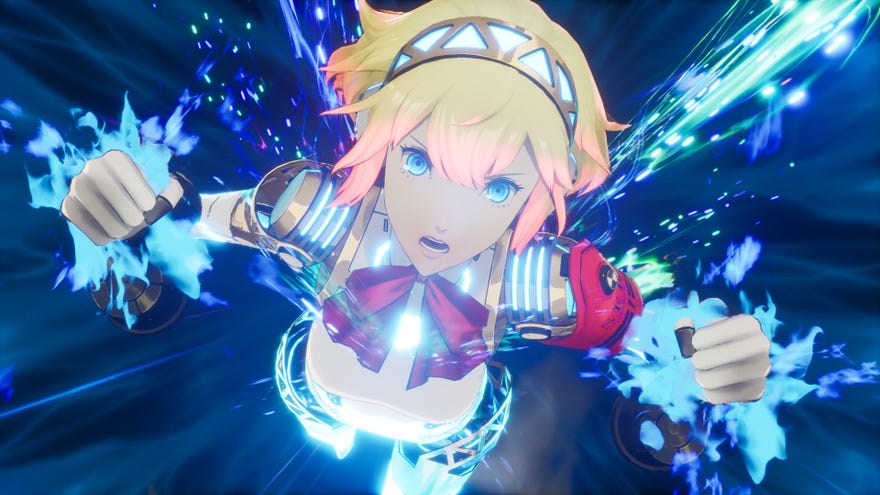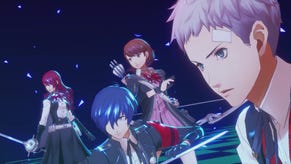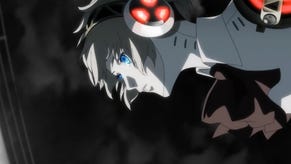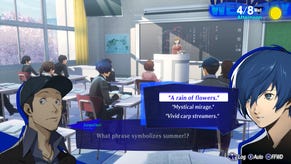Persona 3 Reload review: a high school reunion better left in the history books
Persona-ly, not my cup of tea
On the 23rd of May, I strode out of the exam hall with my head held high. Not only had we cleared out the 42nd floor of the cursed extra-dimensional horror house that was our school’s midnight alter-ego, I’d also just aced my midterms. I spent the afternoon helping my french foreign exchange friend sew a kimono for his estranged uncle, then killed some time before bed by consoling the small child I’d been hanging out with lately about her parent’s divorce.
So goes an average day in one of the very, very many days stuffed into Persona 3 Reload’s year long taste of demon-slaying high school life. A charming fantasy? Perhaps! There's plenty here for fans who don’t mind an old-school approach to grinding while exploring heartfelt, albeit cheesy, friendships. Those who don't get on with anime tropes, though, might find it exhaustingly written and repetitive.
A note, to start: I’m a Persona newbie, and I’ll largely assume you are too. If you’ve played the original and are looking for a piece that speaks to how well the fifteen year-old game has been modernised, you’re better off elsewhere. On the flipside, if you’re merely Persona curious and considering jumping into Reload with minimal JRPG experience, then my pre-playing perspective matched yours. On to the reviewing!
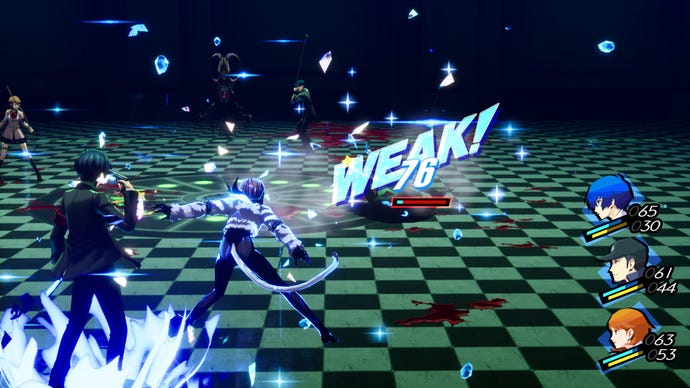
You’re a transfer student with a murky, mysterious past - a student who’s remarkably unfazed when the night sky turns green and puddles of blood ripple through a city with an ominous lack of people but an odd abundance of giant upright coffins. Turns out you’re walking home in the Dark Hour, a creepy liminal time where demons called Shadows stalk the streets and your soon-to-be high school transforms into Tartarus: an Escher-esque tower stuffed to the brim with floor after floor (after floor, after floor, after floor…) of the bastards.
It’s not long before you join a gang of Shadow hunters, who are conveniently also your fellow students and dormmates. You’re a Persona wielder, see, blessed with the ability to summon a combat-ready monster/god/novelty snowman from the depths of your soul. Because you’re super-duper special it turns out you can pick from multiple personas, while every other chump gets stuck with one.
Combat is mostly a Pokémon-like affair of picking which Persona to invoke and which spell to use, with wrinkles that keep things interesting for a few hours tops. You and your foes are vulnerable to certain types of attack, and there’s a knockdown system that gives you an extra action each time you successfully target a weakness. Ideally, you’ll chain attacks together until every opponent is on their knees and your whole team can charge in for an “all-out attack”.
It’s telling that you’re given various tools to make the combat largely play itself. Once you’ve found those weaknesses, either through trial and error or a particular character’s special ability, you can press F to automatically select an attack or item that will target it. If you’ve already triggered a knockdown on your turn, pressing F can also hand your bonus turn over to a pal with an appropriate ability on hand. This baton-passing is smooth, slick, and mindless. You can also assign your teammates behaviours so they’ll play out their turns for you, conveniently sparing you from three quarters of the button hammering.
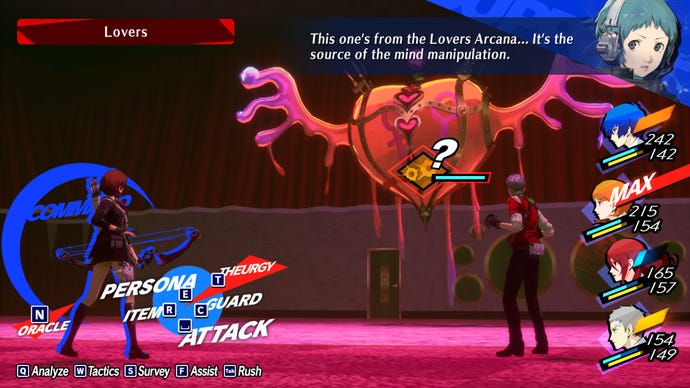
Eventually you unlock special attacks, which cutely charge up by taking actions sometimes vaguely relevant to that character’s personality. I grinned through the first one I saw, enjoying a little dash of flip-filled anime pazazz. I wasn’t grinning by the time I’d seen it for the 79 bajillienth time. Mercifully, there is a button that fast forwards through each normal combat animation (not the special attacks, you’ll bafflingly have to watch those in full), but if you leave it held down then you’ll just do often-piddly basic attacks with your equipped weapon. My principal engagement with fighting soon became timing the pressing of that button with the start and end of each attack.
I suppose you could see it as more of a resource management type challenge, with each fight eating at your - easily-restored, however - health and mana. On higher difficulties, small decisions over whether to debuff an enemy before attacking them might matter more. Playing on a difficulty above normal seems like the only way to make deviating from simply targeting weaknesses whenever possible a worthwhile strategy, potentially avoiding combat devolving into just making the same choice over and over again. Even then there’s no real breadth of options for how to tackle each fight, and curveballs like monsters with no weaknesses wind up simplifying your decision-making rather than making it more interesting.
Unfortunately, I wouldn’t touch the higher difficulties with a ten-foot barge Persona because even on normal there are enemies that can one-shot your character (depending on how much grinding you’ve done), thus insta-ending a potentially 20 minute long fight. I’m not exaggerating - the way some enemies have an infuriating habit of healing themselves all way to full had me howling at my screen.

Navigating Tartarus is wrapped up in its own tedium, with no end of superfluous mechanics attached to either initiating or avoiding fights with the bads moping about on each floor. Before long I simply chose to sprint past all of them.
If you don't sprint past them, there's a separate system where you can combine Personas into new ones that carry over your choice of spells from your previous ones. I found it initially intriguing, poring over the various monstrosities I could concoct. Before long, though, it felt like admin, trying to keep track of which attacks I might be losing with each fuse. It’s also the case that a lot of the attacks are simply more powerful versions of previous ones, rather than those that offer new tactical possibilities.
To its credit, some of the Shadow and Persona designs are inventive. I liked showing off my tentacle brain-monster persona, and the special story encounters chucked some impressively un-hinged creatures at me. I could go on, but enough of Tartarus: suffice to say there are too many floors, and they are far too repetitive. As tiresome as all of that is, whether or not you’ll like Persona probably hinges more on whether or not you like the writing and the characters.
You’ve got your classic spread of teen archetypes: there’s the brash cocky dude, the shy nervous girl, the bookish nerd, the machinegun wielding robo-girl who can talk to the pet dog. They’re not without charm, and some scenes drew a smile (even, once, a chuckle) out of me. There is a lot of overly-earnest schmaltz, but there are also silly twists and playful surprises - though a lot of the turns are comically grim. You go into a bookshop, hang out with the nice elderly couple running the place, they tell you about the tragic death of their son and your Hierophant Persona levels up. Happy days.
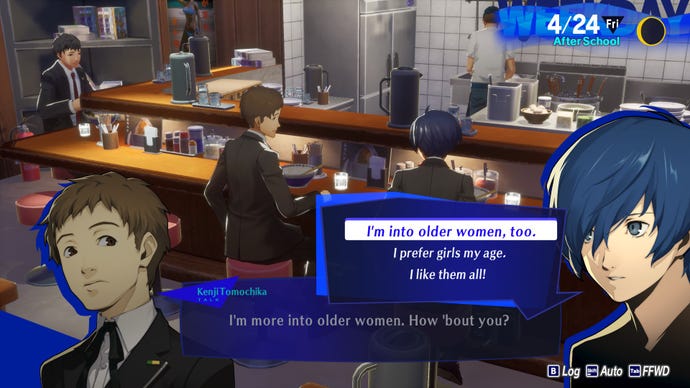
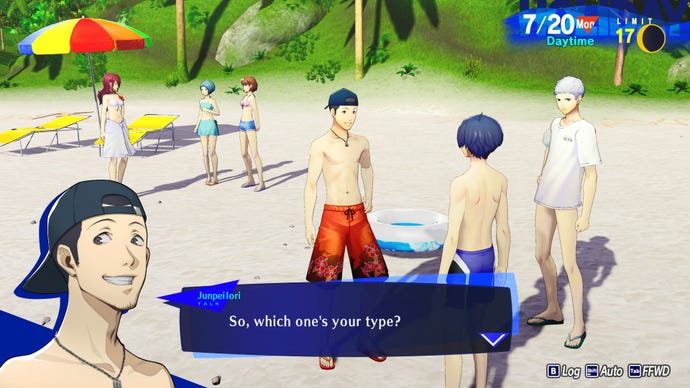

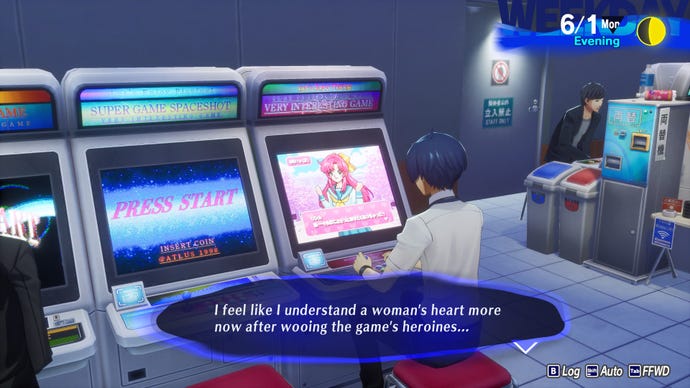
For the most part the writing isn’t so much on the nose as it is hammering your nose into your skull, one cliche about believing in yourself or friendship or not running away from your problems at a time. It’s also laced with perviness, including a particularly icky beach holiday segment where one character plays swimsuit judge to all the 16 - 18 year old female bikini-clad characters as they turn up for a swim. Maybe that’s ignorable for some, but personally I find it hard to rally behind the power of friendship when one of my pals is a massive perv. It hasn’t aged well, and a remake was a missed opportunity to leave this and other parts on the cutting room floor.
To be fair, my first 10 or so hours were carried along by a certain momentum. The days do have a compulsive rhythm, at first, pinging you between tests and chats and dungeon runs. I even felt a sense of pride in getting all the trivia questions right on my first semester finals, alongside ploughing enough evenings into working at a coffee shop to max out my courage and charisma. That’s part of a very barebones system that won’t let you talk to certain people until you’ve progressed from a timid, plain slacker to a badass charismatic genius. Most optional activities are attached to such rewards, which feel much more significant before you see the limit of their impact. Although, I can see how they might work better for people who are keen to lean into the fantasy of hanging out with high-school pals, enjoying a mix of low-stakes mall-based escapades and more serious family dramas.
Moving around town is very slick, I’ll give it that. You can get to almost anywhere with just a few keyboard tippy taps, diving straight into your next dollop of friendship forging frippery. I’ll say again, some of those drew me in! I’m glad I indulged my curiosity about the drunken monk in the night club that I definitely should not have been allowed into, and I enjoyed mulling over whether to tell that little girl it was her fault her parents were divorcing. The scenes are hit and miss, though, and you have to sit through an awful lot of nothing interactions for every fun encounter.

More importantly, for me, any shot at depth or profundity misses the mark entirely, which is unfortunately what the main plot spends most of its time aiming at. Characters are wheeled out with traumas and grievances I couldn’t bring myself to care about, because they don’t talk or act enough like real people do. Their thoughts and actions swept along by dogmatic adherence to predictable, played out notions of revenge, duty and unsubstantiated nihilism. No wisdom Persona 3 can impart goes beyond the notion that life sucks sometimes, but it’s still important to keep fighting, to believe in yourself and - above all - to embrace the power of friendship. If you don’t mind that kind of cheesiness, maybe the more heartfelt moments will land for you. For me, it’s emblematic of writing that relies on appeals to generic truisms rather than genuinely knotty moral, existential or personal problems.
Perhaps, for you, anime characters not acting like real humans is all part of the buy-in, and it’s silly to expect otherwise. That’s fine! In the past I’ve very much enjoyed shows with a similar friendship-worshipping ethos, swamped as they are in earnest cliche. They don’t move me, though, and a 20 minute TV show is a better context for me to enjoy characters as quipping, plot-propelling toys rather than people. Anime trappings don’t let me see them as anything else.
For me enjoying anime comes down to whether I can weather the inevitable anime tropes, and here they overwhelmed my flood defences. I found little solace in combat that was either overly cruel and grind-demanding or mindlessly easy, yet always agonisingly repetitive even on the easiest and therefore speediest difficulty. I'm sure existing fans will be pleased with the modernisations, and newcomers who want cheesy anime, low stakes conversations, and dungeon crawling will find plenty to love here. But if you're Persona-curious, I’d be wary of leaving your giant street coffin.
This review is based on a review build of the game provided by publishers Sega.
